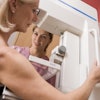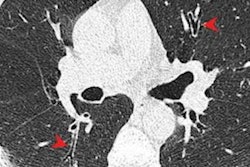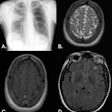Dear AuntMinnieEurope Member,
The 11 November inquest into a patient death in North Wales leaves several unanswered questions: Did the teleradiologist have all the relevant clinical information? Was he under intense pressure to report more emergency cases? How "shallow and subtle" was the subdural hematoma he missed? Would it have made any difference if a neuroradiologist had reported the scan or if artificial intelligence were available?
Answering these questions is essential to maintain confidence and belief in the system. The relatives of the patient who died in July 2020 deserve some answers. Let's hope they're provided.
Looking at our website's readership figures and trends, many of you have enjoyed Dr. Giles Maskell's columns over recent months. In his latest offering, he discusses the driving forces behind the growing demand for radiology and what can be done to address the issue.
The clinical implementation of total-body PET/CT systems is one of the most exciting prospects for the medical imaging community right now. Swiss expert Prof. Dr. Axel Rominger shared his latest experiences at a recent European hybrid imaging event. Find out more in the Molecular Imaging Community.
FDG-PET/CT is developing an important role in breast cancer, particularly in distant disease staging and treatment response assessment. The leading Austrian researcher Dr. Katja Pinker-Domenig gave an impressive talk on this subject at the same event. Don't miss the news report in our Women's Imaging Community.
No cure exists for gliomas, but surgery, chemotherapy, radiotherapy, and supportive treatment can improve patients' quality of life and extend survival. Accurate diagnosis is essential, and that's where PET often comes into its own.
A new two-center French study has shown the high accuracy of F-18 fluorodopa PET for differentiating recurrent malignant gliomas from treatment-related changes. It has also underlined the importance of the dynamic slope as a potential diagnostic and prognostic biomarker in isocitrate dehydrogenase gliomas.



















